Scottish Crossbill
- December 17, 2023
- 0 comment
The Scottish Crossbill’s (Loxia scotica) reflects both its genus (Loxia) and its specific epithet (scotica), indicating its association with Scotland. The genus name “Loxia” is derived from the Greek word “loxos,” meaning “crosswise” or “oblique,” which aptly describes the crossed tips of the bird’s distinctive bill. The species name “scotica” highlights its connection to Scotland, emphasizing its status as an endemic bird found primarily in the Caledonian pine forests of the Scottish Highlands.
Physical Appearance of Scottish Crossbill
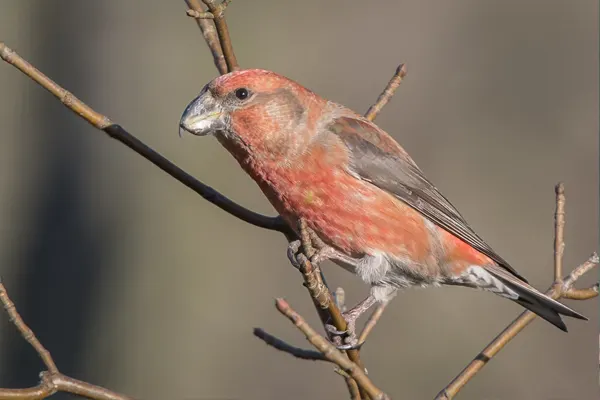
Scottish Crossbill
- Lifespan: 4-6 years
- Habitat: Caledonian Forests of Scotland, specifically the Scots pine (Pinus sylvestris) woodlands.
- Diet: Conifers seeds, insects, and berries,
- Size: 16-17 cm
- Weight: 44 grams
- Wingspan: 27-37 m
- Conservation Status: Least Concern.
- Population Trend: Stable.
The Scottish Crossbill is a striking bird with a unique appearance. Its crossed mandibles are its most distinctive feature, and its brightly colored plumage (especially in males) makes it easy to identify
Species Type of Scottish Crossbill
The Scottish Crossbill (Loxia scotica) is a species of bird. It belongs to the finch family, Fringillidae, and is classified within the genus Loxia. The species is characterized by its unique crossed bill adaptation, which sets it apart from other finches and contributes to its specialized feeding behavior in pine forests.


The Scottish Crossbill (Loxia scotica) is a small passerine bird in the finch family Fringillidae. It is endemic to the Caledonian Forests of Scotland, and is the only terrestrial vertebrate species endemic to the United Kingdom.
Feather Coloration of Scottish Crossbill
The feather coloration of the Scottish Crossbill (Loxia scotica) varies between males and females. In males, the plumage is typically characterized by shades of red or orange. The intensity of these colors can vary, and the overall appearance may include a mix of vibrant hues. On the other hand, females exhibit more subdued and cryptic coloration, often with greenish-brown tones. These gender-specific colorations play a role in the visual identification and sexual dimorphism of the species. The combination of these distinct feather colors, along with the crossed bill, contributes to the overall unique appearance of the Scottish Crossbill.

Male
- Head, neck, and breast: Bright crimson red, the most striking feature of the male plumage.
- Back and wings: Dark brown with faint streaking.
- Two white wing bars: These are prominent and easily visible in flight.
- Underparts: Pale buffy gray to pale yellow, becoming brown or buffy brown on the flanks, and heavily streaked throughout with blackish brown.
Female
- Overall olive-green: This provides excellent camouflage in their coniferous habitat
- Head: Olive, variably tinged green or yellow.
- Back and wings: Olive gray with paler edges.
- Rump: Olive to yellowish green, appearing brighter than remaining upperparts.
- Underparts: Dull buffy gray to pale yellow, heavily streaked with blackish brown.

The feather coloration of the Scottish Crossbill (i) is unique and distinctive, with different appearances for males, females, and juveniles.
Flight Characteristics of Scottish Crossbill
The Scottish Crossbill is a skilled flier, adapted to the demands of its forest habitat. Its short, powerful wings allow for maneuverability and quick bursts of speed, while its gliding ability helps it conserve energy during long flights. These flight characteristics are essential for its survival and success in the coniferous forests of Scotland.
Wing Shape
- Short, broad wings: These provide good maneuverability in tight spaces, allowing them to weave through branches and cones.
- High wing loading: This means they have a high ratio of body weight to wing area, resulting in fast, powerful flight.
Flight Style
- Flapping flight: They primarily use flapping flight for short bursts, powered by strong wing muscles.
- Gliding: They can also glide for short distances, taking advantage of wind currents and air thermals.
- Acrobatic: They are agile flyers, capable of performing quick turns and sudden changes in direction.

Speed and Maneuverability
- Capable of reaching speeds of up to 35 miles per hour (56 kilometers per hour) in short bursts.
- Excellent at navigating through dense forests, dodging branches and obstacles with ease.
Flight Calls
- Emit a variety of calls in flight, including high-pitched whistles and chirps.
- These calls are used for communication and flock coordination, particularly when foraging for cones.
Migration
- Scottish Crossbills are nomadic and do not have a fixed migration pattern.
- They move seasonally in response to food availability, following cone crops throughout their range.
- This irruptive behavior means their presence in specific areas can vary from year to year.
Migration Patterns of Scottish Crossbill
The Scottish Crossbill (Loxia scotica) is a unique bird with an unusual migration pattern. Unlike many birds that migrate long distances seasonally, Scottish Crossbills are nomadic and do not have a fixed route or timing for their movements.
About their migration
- Irruptive: Their movements are primarily driven by the availability of food, specifically the seed cones of coniferous trees.
- Unpredictable: The timing and direction of their movements can vary significantly from year to year, making them difficult to track.
- Local movements: They typically travel within a radius of 20 km (12 miles) of their breeding grounds.
- Following the cones: They will move to areas where the cone crops are abundant, regardless of the season.
- Flock behavior: They often move in small flocks of 10-20 individuals, which can increase their chances of finding food.
- Limited long-distance movements: While they primarily stay within their local area, they may undertake longer journeys of up to 500 km (310 miles) in years with widespread cone failures.
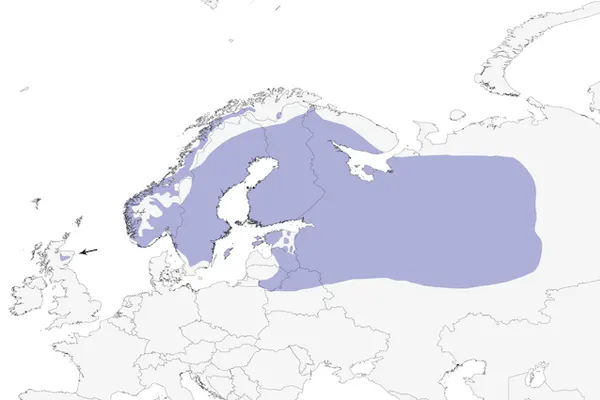


Reasons for nomadic behavior
- Limited food resources: The Scottish Crossbill relies heavily on the seeds of coniferous trees, which are not always evenly distributed or available year-round.
- Adaptability: Their nomadic behavior allows them to adapt to changing food resources and ensure their survival.
- Competition: Following cone crops helps them avoid competition with other birds in areas with limited food supplies.
Challenges of nomadic behavior
- Predation: Their unpredictable movements can make them more susceptible to predation, especially during long journeys.
- Habitat loss: The loss of coniferous forests reduces their food resources and can limit their ability to find suitable breeding sites.
- Climate change: Changes in temperature and precipitation patterns can impact cone production and make it more difficult for them to find food.
Habitat & Distribution of Scottish Crossbill
The Scottish Crossbill (Loxia scotica) is a unique bird found solely in the Caledonian Forests of Scotland. This ancient ecosystem is characterized by its mature Scots pine (Pinus sylvestris) woodlands, providing the ideal habitat for the crossbill’s specialized diet and nesting requirements.
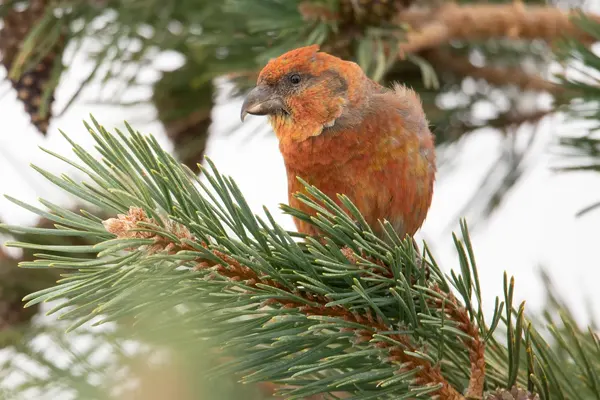
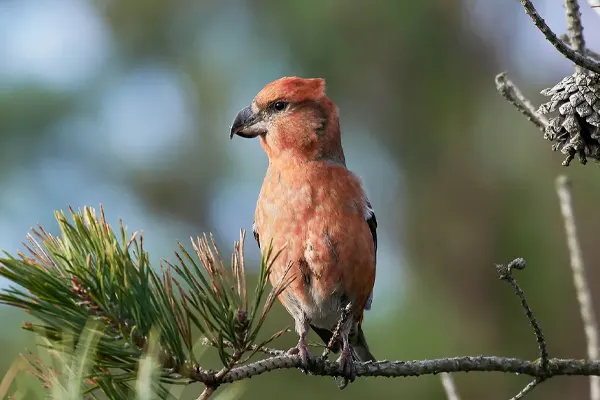
Distribution
- Endemic to Scotland: The Scottish Crossbill is found exclusively in the Highlands of Scotland, within a range extending from Sutherland in the north to Moray and Aberdeenshire in the east.
- Patchy distribution: Their populations are fragmented and concentrated in areas with suitable habitat.
- Nomadic movements: As mentioned before, their nomadic behavior means their presence in specific areas can vary depending on cone crop availability.
The Scottish Crossbill is a fascinating bird with a unique relationship to its habitat. Understanding their specific requirements and the threats they face is vital for ensuring their continued survival in the Caledonian Forests.
Behavioral Traits of Scottish Crossbill
The Scottish Crossbill (Loxia scotica) exhibits a range of intriguing behavioral traits adapted to its unique habitat and specialized diet. Exhibits a complex and fascinating array of behavioral traits. These behaviors are essential for their survival and success in their unique forest habitat.
- Specialized seed extraction: Their crossed mandibles are perfectly adapted for prying open cones and extracting seeds.
- Cooperation: Individuals work together to extract seeds from cones, with some individuals holding the cone while others extract the seeds.
- Food storage: They cache seeds in crevices and branches for future consumption, particularly during harsh winter months.
- Dietary flexibility: While primarily relying on cone seeds, they will also supplement their diet with insects, berries, and other available food sources.
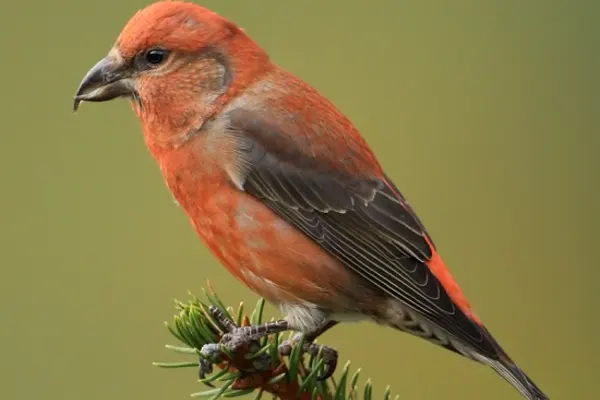
Social behavior
- Flocking: They are typically found in small flocks of 10-20 individuals, particularly outside the breeding season.
- Gregariousness: Flocks may join together to exploit abundant food sources, forming larger aggregations during periods of high cone production.
- Territoriality: During the breeding season, pairs defend small territories around their nest site.
Role in Ecosystem of Scottish Crossbill
The Scottish Crossbill also plays a symbolic role in the Caledonian Forest ecosystem. As the UK’s only endemic bird species, it represents the unique biodiversity and natural heritage of this ancient woodland. Their presence adds to the cultural and ecological value of the Caledonian Forest and inspires conservation efforts to protect this vital ecosystem.

- Seed dispersal: Through their feeding habits, Scottish Crossbills disperse seeds from cones across the forest floor. This helps in the regeneration of coniferous trees, ensuring the continuation of the Caledonian Forest ecosystem.
- Insect control: They also consume a variety of insects found in the cones, helping to control populations and maintain a healthy balance in the ecosystem.
- Nutrient cycling: Their droppings and decaying carcasses contribute to the nutrient cycle of the forest, returning valuable nutrients to the soil and supporting plant growth.
- Food source for predators: The Scottish Crossbill is a prey species for various birds of prey, such as goshawks and Eurasian sparrowhawks. This provides a vital food source for these predators and contributes to the overall diversity of the ecosystem.
- Indicator species: The presence and abundance of Scottish Crossbills can be used as an indicator of the health of the Caledonian Forest ecosystem. Their dependence on mature Scots pine trees and cone production highlights the importance of protecting this habitat for their survival and the overall health of the forest.
Dietary Habits of Scottish Crossbill
The Scottish Crossbill (Loxia scotica) is a specialist feeder with a diet almost entirely dedicated to the seeds of conifers, particularly the Scots pine (Pinus sylvestris). Their unique physical adaptations, including their crossed mandibles, allow them to extract these seeds from cones with remarkable efficiency.
- Cone seeds: These are the staple food of the Scottish Crossbill, providing them with essential nutrients such as carbohydrates, fats, and proteins.
- Types of cones: They feed on the seeds of a variety of conifers, including Scots pine, larch (Larix decidua), and lodgepole pine (Pinus contorta).
Secondary foods
- Insects: They supplement their diet with insects, particularly during the breeding season when protein requirements are higher.
- Berries: They may also eat berries, especially during periods when cone seeds are scarce.
- Other seeds: Other seeds, such as those from birch and alder trees, may be eaten occasionally.
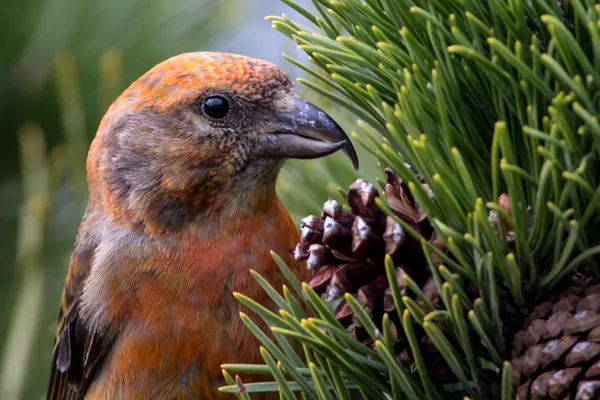

- The Scottish Crossbill’s diet plays a crucial role in the dispersal of conifer seeds, contributing to the regeneration of the Caledonian Forest ecosystem.
- Their specialized diet makes them vulnerable to changes in cone production, which can be affected by factors such as weather, climate change, and forestry practices.
The Scottish Crossbill’s dietary habits are a fascinating example of adaptation and specialization. Their unique adaptations and reliance on coniferous seed cones make them an important part of the Caledonian Forest ecosystem.
Interesting Facts of Scottish Crossbill
This remarkable bird is an amazing example of adaptation and plays a vital role in the Caledonian Forest ecosystem. By understanding and appreciating the Scottish Crossbill, we can gain a deeper appreciation for the beauty and complexity of the natural world.
Unique Adaptations
- The Scottish Crossbill is the only terrestrial vertebrate species endemic to the UK.
- They have crossed mandibles, specially adapted for prying open cones and extracting seeds.
- Their bill muscles are strong enough to crack open even the toughest cones.
- Their diet is almost entirely composed of conifer seeds, particularly Scots pine.
Nomadic Behavior
- Scottish Crossbills are nomadic, following cone crops throughout their range.
- Their movements can be unpredictable and vary greatly from year to year.
- This behavior allows them to adapt to changing food availability.

Specialized Communication
- They have a complex repertoire of vocalizations, including whistles, chirps, and calls.
- These calls are used for communication, flock coordination, and territorial defense.
- Their flight patterns and wing beats also convey specific messages.
4. Cooperative Feeding
- Scottish Crossbills often work together to extract seeds from cones.
- Some individuals hold the cone while others extract the seeds.
- This cooperative behavior increases their efficiency and allows them to access seeds they might not be able to reach alone.
5. Ecosystem Role
- They play a vital role in the Caledonian Forest ecosystem.
- Their feeding habits disperse seeds across the forest floor, aiding in the regeneration of coniferous trees.
- They also control insect populations and contribute to nutrient cycling.
- Their presence is an indicator of the health of the Caledonian Forest.
Nesting Habits of Scottish Crossbill
The nesting habits of the Scottish Crossbill are complex and fascinating. Their adaptations and cooperative breeding behavior allow them to successfully raise their young in the challenging environment of the Caledonian Forest. Understanding and protecting their nesting sites is crucial for the continued survival of this unique bird species.
Timing and Location
- Breeding season: Early breeders, starting as early as February and continuing through March and April.
- Nest sites: Typically built in the branches of mature Scots pine trees, at heights ranging from 3 to 15 meters (10 to 50 feet).
- Nest construction: Both parents participate in building the nest, using twigs, moss, lichen, and feathers.
- Nest shape: Cup-shaped, with a well-defined lining of soft materials.
Clutch and Incubation
- Clutch size: 3-5 eggs, laid on a daily basis.
- Egg color: Pale blue or greenish-blue with brown speckles.
- Incubation: Both parents incubate the eggs for 12-14 days.
- Parental care: Both parents feed and care for the chicks for about 20 days after hatching.
- Fledging: Chicks leave the nest and become independent after approximately 4 weeks.


Unique Nesting Behavior
- Nest sanitation: Parents remove fecal sacs from the nest to maintain hygiene and protect chicks from parasites.
- Cooperative breeding: In years with abundant food resources, young helpers from previous broods may assist in raising the current chicks.
- Nest relocation: If the nest is disturbed or threatened, parents may move the eggs or chicks to a new location.
- Nest reuse: They may reuse the same nest site for multiple breeding seasons.
Factors Affecting Nesting Success
- Habitat quality: Nesting success is higher in mature Scots pine forests with abundant cone crops.
- Predation: Predators like squirrels, crows, and raptors can threaten nests and chicks.
- Weather: Cold weather and storms can impact nesting success and chick survival.
- Human activities: Forest management practices and disturbances can negatively affect nesting sites and food availability.
Melodious Song & Vocalizations of Scottish Crossbill
The Scottish Crossbill (Loxia scotica) boasts a diverse repertoire of vocalizations used for communication, flock coordination, and territorial defense. While their calls may sound “jumpy” and “mechanical” to the human ear, they are complex and serve various functions within the bird’s social life.
Types of Calls
- Flight calls: These loud, clear whistles are the most commonly heard vocalization. They are used to maintain contact with other members of the flock and signal location during flight.
- Excitement calls: Short, high-pitched chirps and trills emitted when encountering food, mates, or potential threats.
- Threat calls: Deep, guttural screeches accompanied by wing-whirring, used to defend territory and warn off intruders.
- Song: Composed of complex, melodious phrases sung mainly by males during the breeding season. They serve to attract mates and advertise territory ownership.

Unique Features of Scottish Crossbill Vocalizations
- Dialects: Different populations of Scottish Crossbills have distinct dialects, allowing them to recognize each other and maintain social cohesion.
- Mimicry: They are capable of mimicking the calls of other bird species, potentially to deceive predators or gain an advantage in resource competition.
- Complexity: While seemingly simple to human ears, their calls are quite complex and involve subtle variations in pitch, duration, and frequency.
Role of Vocalizations
- Maintaining social bonds: Calls are crucial for flock cohesion, enabling communication and coordination during foraging and migration.
- Territorial defense: Vocalizations help defend breeding territories and prevent competition from other birds.
- Attracting mates: Song plays a significant role in attracting females and establishing breeding relationships.
- Predator avoidance: Alarm calls alert other birds to potential dangers, increasing the collective vigilance and survival chances of the flock.
studying these vocalizations, scientists can gain valuable insights into their social behavior, population structure, and communication patterns. This knowledge is crucial for conservation efforts and ensuring the long-term survival of this unique bird species.
Ecological Significance
The ecological significance of the Scottish Crossbill extends beyond its role in seed dispersal and insect control. They are vital components of the Caledonian Forest ecosystem, playing a crucial role in its health, balance, and cultural heritage. Protecting these unique birds is essential for ensuring the long-term sustainability of the Caledonian Forest and the biodiversity it supports.
Seed Dispersal
- Their primary diet of conifer seeds allows them to disperse these seeds across the forest floor through their droppings and caching behavior.
- This contributes to the regeneration of coniferous trees, particularly the Scots pine, which forms the foundation of the Caledonian Forest ecosystem.
Insect Control
- They consume insects found in pine cones, helping to control populations and maintain a healthy balance in the ecosystem.
- This helps regulate insect herbivory, which can damage trees and disrupt forest health.
Nutrient Cycling
- Their droppings and decaying carcasses contribute valuable nutrients to the soil, such as nitrogen and phosphorus.
- This process helps nourish the trees and other plants, promoting overall ecosystem productivity.
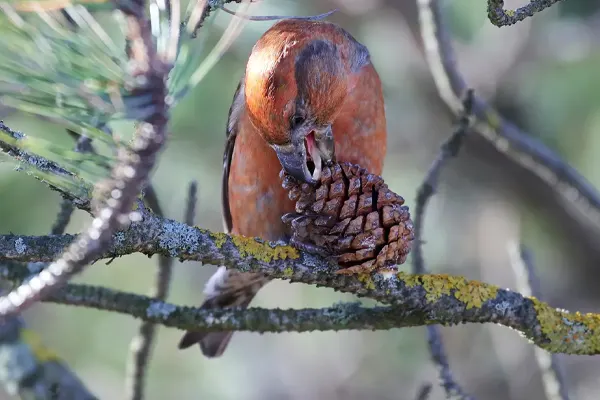
Food Source for Predators
- The Scottish Crossbill serves as a prey species for various birds of prey, including goshawks and Eurasian sparrowhawks.
- This provides a vital food source for these predators and contributes to the diverse food web of the Caledonian Forest.
Indicator Species
- Their presence and abundance can be used as an indicator of the health of the Caledonian Forest ecosystem.
- Changes in their population or distribution can signal potential problems in the ecosystem, such as habitat loss or changes in food availability.
- By monitoring the Scottish Crossbill, researchers can gain valuable insights into the overall health and well-being of the Caledonian Forest.
Conservation Status of Scottish Crossbill
The long-term survival of the Scottish Crossbill depends on continued conservation efforts. By addressing the threats they face and protecting their habitat, we can ensure that these fascinating birds continue to thrive in the Caledonian Forest for generations to come.
Reasons for Least Concern status
- Relatively stable population: The estimated population size is 6,800 breeding pairs in the UK, and the overall population trend appears to be stable.
- Wide distribution: They are found throughout the Caledonian Forest region of Scotland.
- Generalist diet: They can adapt to different food sources, making them less vulnerable to fluctuations in cone production.
- Protected habitat: Some areas of their habitat are protected within national parks and nature reserves.


Threats and Concerns:
- Habitat loss and fragmentation: Forestry practices, such as clear-cutting and the planting of non-native conifers, can reduce the availability of suitable mature Scots pine trees.
- Climate change: Changes in temperature and precipitation patterns can impact cone production and affect the long-term viability of their habitat.
- Predation: Predators like squirrels, crows, and raptors can threaten nests and chicks.
- Human activities: Disturbance from recreational activities and tourism can disrupt breeding and foraging behavior.
Conservation efforts:
- Habitat protection: Organizations like the RSPB and NatureScot are working to protect and restore Caledonian Forest habitat.
- Sustainable forestry practices: Promoting forestry practices that maintain a diverse range of age classes and species of trees is crucial for the long-term survival of the crossbill.
- Monitoring and research: Ongoing monitoring of the crossbill population and research into their habitat needs are essential for effective conservation efforts.
- Public awareness: Raising awareness about the Scottish Crossbill and their importance to the Caledonian Forest can encourage support for conservation efforts.
Research and Ongoing Studies of Scottish Crossbill
The Scottish Crossbill (Loxia scotica) remains a subject of ongoing research and investigation due to its unique adaptations and ecological significance. By continuing research and investigation, scientists can gain a deeper understanding of the Scottish Crossbill’s ecology, behaviour, and conservation needs. This knowledge is crucial for informing effective conservation strategies and ensuring the long-term survival of this unique bird species within the Caledonian Forest ecosystem.
Habitat and Distribution
- Habitat selection: Research is underway to better understand the specific habitat requirements of the Scottish Crossbill and identify factors influencing their distribution within the Caledonian Forest.
- Population genetics: Studies aim to understand the genetic diversity and structure of the Scottish Crossbill population, including potential subpopulations and dispersal patterns.
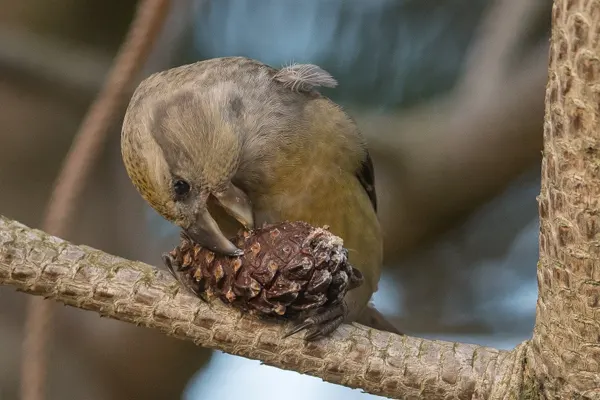
Behavior and Communication
- Social behavior: Studies explore the social dynamics and communication patterns within flocks, including cooperative breeding and the role of different individuals.
- Vocalizations and dialects: Research focuses on the complexity and variation of crossbill calls, investigating their use in communication, territorial defense, and mate attraction.
- Cognitive abilities: Studies explore the cognitive skills of the crossbill, including their problem-solving abilities in extracting seeds from cones.
Ongoing Research
- Investigating the role of the crossbill in seed dispersal and forest regeneration.
- Studying the impacts of climate change and extreme weather events on crossbill populations.
- Exploring the use of new technologies for monitoring and tracking crossbill populations.
Educational and Ecotourism of Scottish Crossbill
The Scottish Crossbill presents a unique opportunity to combine education and ecotourism in a way that benefits both the bird species and the local community. By promoting responsible and sustainable tourism practices, we can ensure that the Scottish Crossbill continues to thrive for generations to come.
Educational Opportunities
- School programs: Birdwatching activities and educational talks focusing on the Scottish Crossbill can be incorporated into school curriculums, enhancing students’ knowledge about birds, ecology, and conservation.
- Citizen science projects: Involving the public in research projects like nest monitoring and bird counts can provide valuable data for scientists and foster public engagement in conservation efforts.
- Interactive exhibits: Museums and nature centers can showcase exhibits featuring the Scottish Crossbill’s biology, behavior, and habitat, promoting awareness and appreciation for this unique species.
- Online resources: Educational websites, mobile apps, and documentaries can provide accessible information about the Scottish Crossbill, reaching a wider audience and fostering online learning.

Ecotourism Opportunities
- Birdwatching tours: Guided tours led by experienced birdwatchers can offer visitors opportunities to observe Scottish Crossbills in their natural habitat and learn about their fascinating behaviors.
- Wildlife photography workshops: Workshops focused on photographing the Scottish Crossbill can provide aspiring photographers with a unique and challenging experience while appreciating the bird’s beauty.
- Ecolodges and nature retreats: Accommodations located near Caledonian Forest areas can offer visitors opportunities to experience the forest environment and learn about the Scottish Crossbill and other native species.
- Sustainable tourism initiatives: Ecotourism companies can develop programs that minimize environmental impact and contribute to the conservation of the Caledonian Forest and its inhabitants, including the Scottish Crossbill.
Benefits of Educational and Ecotourism
- Raising awareness: Educational and ecotourism initiatives can raise awareness about the Scottish Crossbill and its importance to the Caledonian Forest ecosystem.
- Promoting conservation: Increased awareness can lead to greater support for conservation efforts, ensuring the protection of the crossbill and its habitat.
- Economic benefits: Ecotourism can generate economic benefits for local communities, fostering sustainable development and supporting conservation efforts.
- Educational experience: Educational programs and ecotourism activities can provide valuable learning opportunities for people of all ages, fostering an appreciation for nature and conservation.
Conclusion
The Scottish Crossbill (Loxia scotica) is a remarkable bird species endemic to the Caledonian Forest of Scotland. With their crossed mandibles, specialized diet, and complex social behaviors, they play a crucial role in the health and balance of the ecosystem.
Their crossed beaks are specifically adapted for extracting seeds from cones, allowing them to exploit a unique food source.
The Scottish Crossbill stands as a testament to the wonders of adaptation and the interconnectedness of the Caledonian Forest ecosystem. By appreciating their unique role and continuing conservation efforts, we can ensure that these fascinating birds continue to grace the Scottish landscape for generations to come.



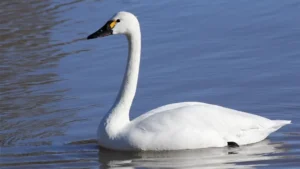
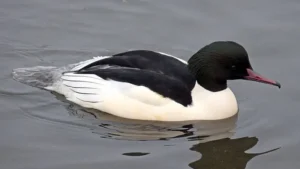
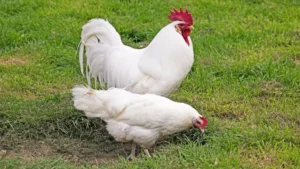

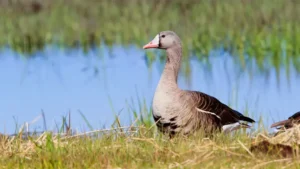
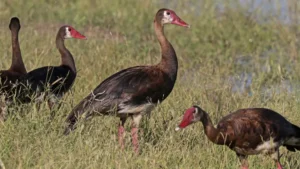
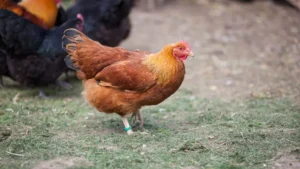
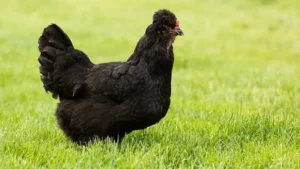
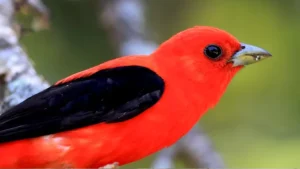

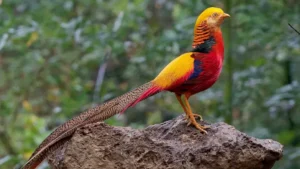
Leave your comment